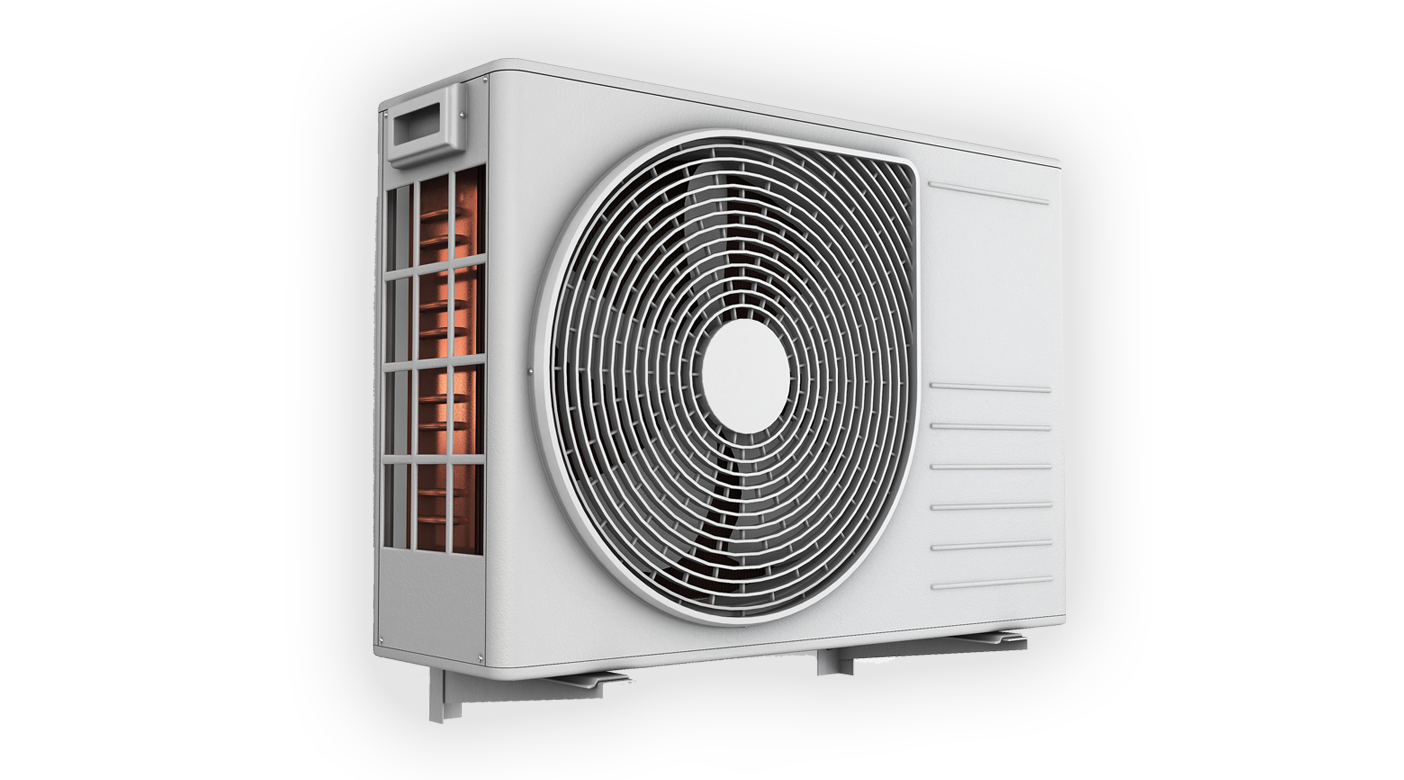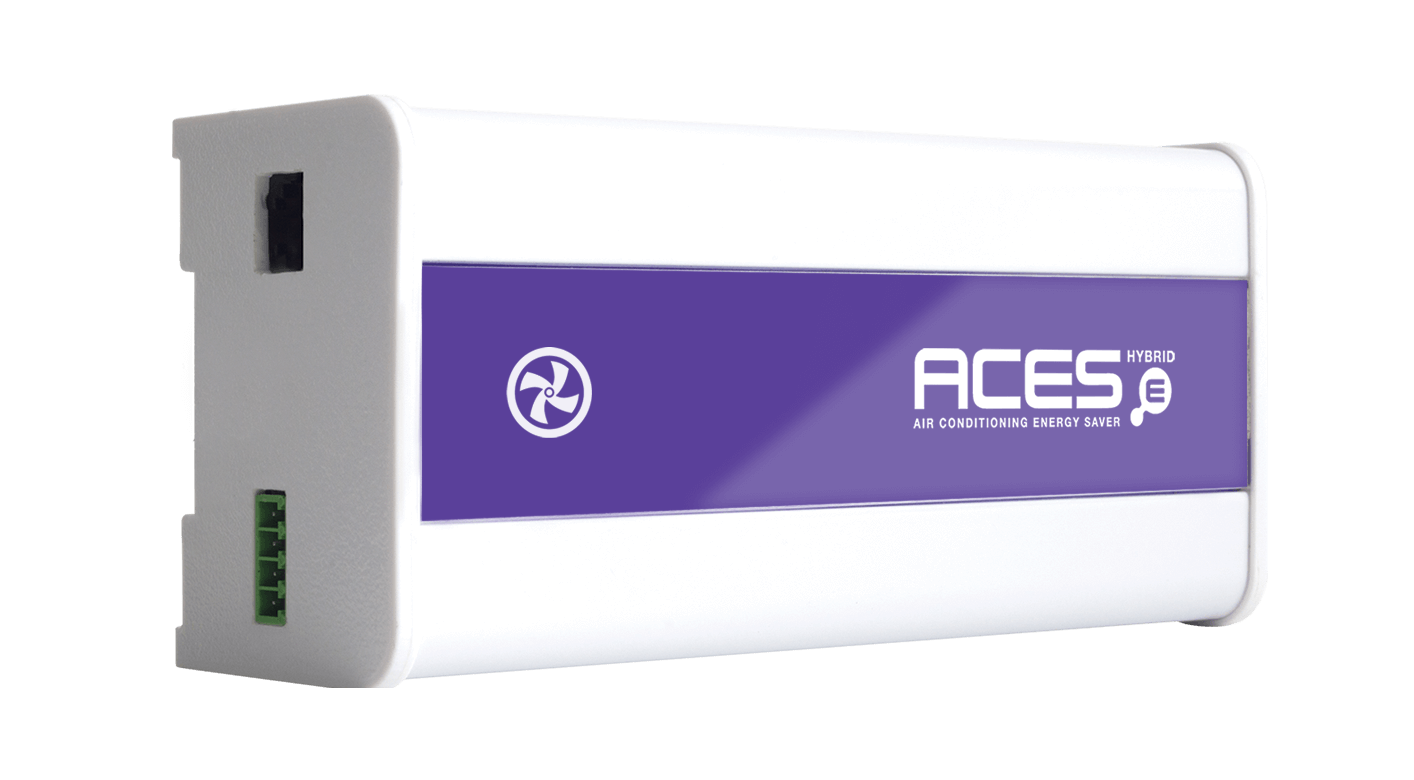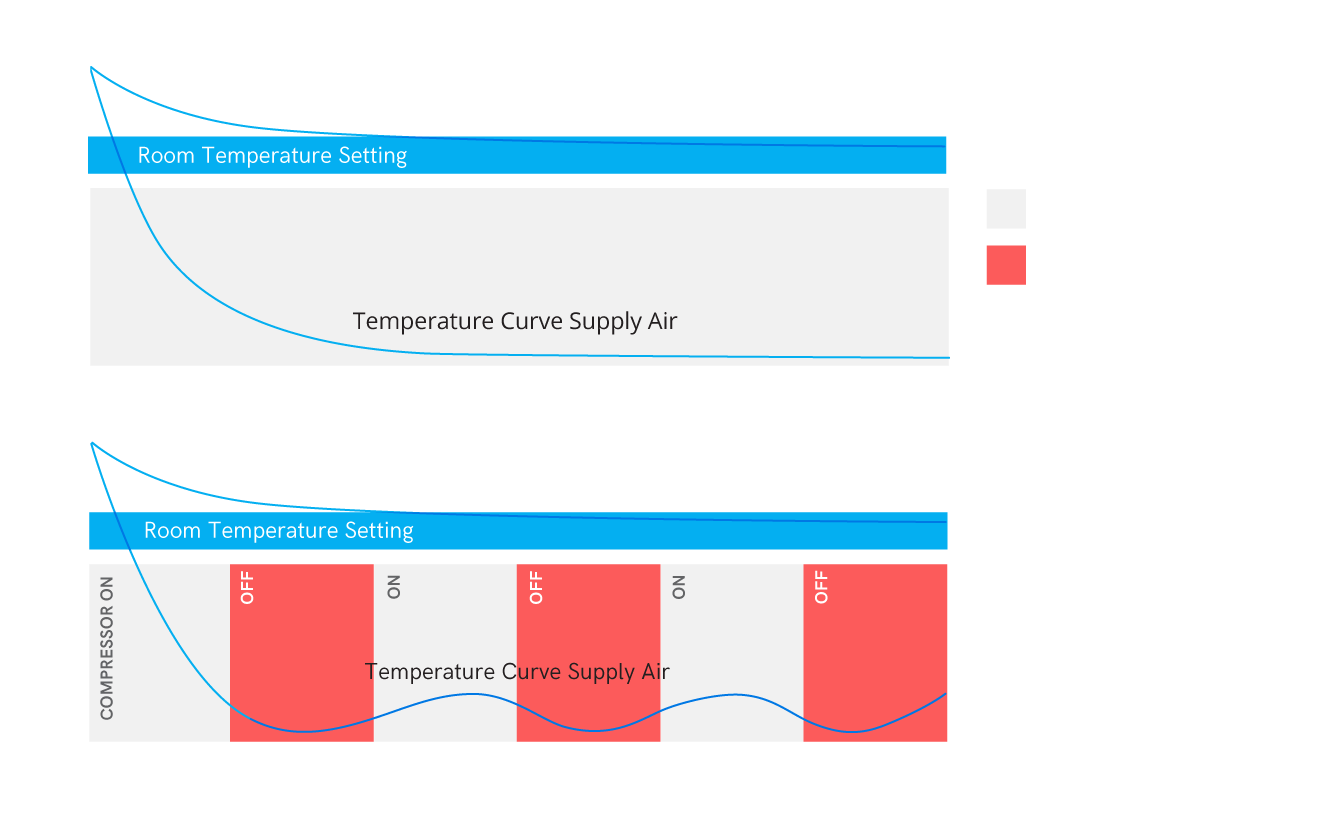ACES – Air Conditioning Energy Saving
The Problem
The Solution
The Problem With Air-Con
Air-conditioning systems are designed to provide force-cooled air into a room, thereby lowering and maintaining the temperature. The problem is that they don’t do this intelligently.
Such systems are generally switched off via a thermostat or simple programmer. The compressor and fan within the air-con simply run until the thermostat or target temperature is satisfied. But did that energy-intensive compressor need to be running the whole time?
Compressors are often over-sized for their application and, what’s more, an effect called ‘thermodynamic saturation‘ means they often run way past the point at which they provide any benefit…

The ACES Solution
ACES directly addresses the problem of thermodynamic saturation (TS).
Through advanced temperature sensing and control algorithms, the ACES unit detects the exact point at which TS is reached and switches the compressor off.
It doesn’t touch the fan though, which continues to run – maximising the effect of latent cooling left in the compressor’s coils. The fan draws a negligible amount of energy, so this barely impacts the devices energy profile.
When the compressor is needed again, ACES commands the air-con to pop it on again. The result is that your energy-hungry compressor only works when it’s needed. Your air-con performance stays the same, but your energy consumption can be reduced by as much as 35%.

The Impact of ACES
The key impact of ACES is shown on the graph (right).
As you can see, the introduction of the ACES product into an air-con fixture modulates the supply of air into the space. Whilst never actually breaching the temperature set on the thermostat or programmer, the system switches the compressor on and off as required.
The result is a considerable amount of time where the air con is active, but not drawing excessive amounts of energy from your supplier.
Though very widely applicable, we have found the most remarkable results in industries like convenience stores and fast food chains – particularly in warmer climates – where a cool space is a must and air-con spend is consequently very high. Even so, just about any building anywhere can benefit from this technology.

-
Energy Savings
Remarkable cost savings.
-
Year Payback Period
Short, cost-effective ROI.
-
10-Year Survival
Negligible maintenance requirement.